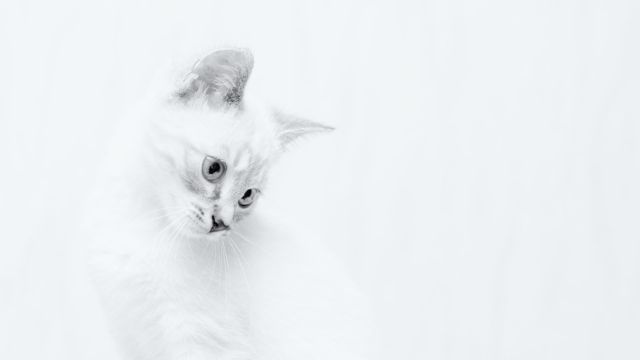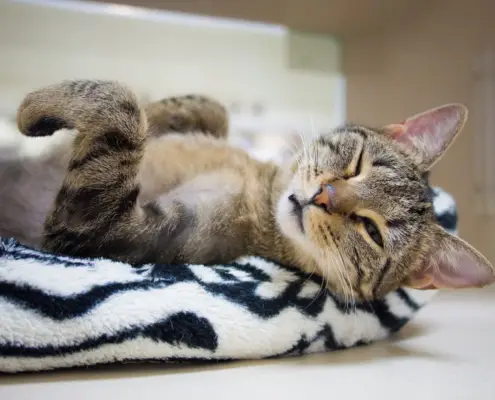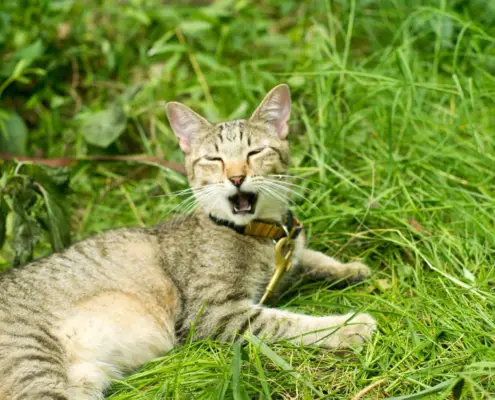
Cats are fascinating creatures with a unique anatomy that sets them apart from other animals. One intriguing aspect of their skeletal structure is the presence of collarbones, also known as clavicles. In this article, we will delve into the intricacies of cat collarbones and explore their function, evolutionary significance, and common misconceptions surrounding them. By understanding the role of collarbones in a cat’s agility and balance, we can gain a deeper appreciation for the marvels of feline anatomy.
Understanding Feline Anatomy
To comprehend the significance of collarbones in cats, we must first understand the basics of feline anatomy. Cats have a flexible and agile body, designed for hunting and climbing. Their skeletal structure is specialized for these activities, and their collarbones play a crucial role in supporting their movements. Unlike humans, who have a complete collarbone connecting the shoulder to the sternum, cat collarbones are unique in their structure.
The Function of Collarbones in Cats
Cat collarbones are not directly attached to the rest of the skeleton like human collarbones. Instead, they are connected to the shoulder blades, providing support and stability to the front limbs. This arrangement allows cats to have a wide range of motion in their shoulders, enabling them to navigate narrow spaces, jump, and pounce with exceptional precision. The collarbones act as a flexible link between the shoulder blades, enhancing a cat’s agility and balance.
Evolutionary Significance of Collarbones in Cats
The presence of collarbones in cats is a remnant of their evolutionary history. While most mammals have collarbones, or clavicles, cats have modified versions that serve a different purpose. Through the process of evolution, these bones have become more flexible and lightweight in cats, allowing for the remarkable acrobatic abilities we associate with them. The presence of collarbones in cats is a testament to their ancient lineage and their adaptation to their unique hunting and climbing lifestyle.
Common Misconceptions about Cat Collarbones
There are several misconceptions surrounding cat collarbones that need to be addressed. One common misconception is that collarbones prevent cats from fitting through small spaces. In reality, the flexibility of cat collarbones allows them to squeeze through tight openings effortlessly. Another misconception is that collarbones are responsible for a cat’s purring. While collarbones do play a role in supporting the muscles used for purring, they are not directly involved in the production of the sound.
Differences between Cat Collarbones and Human Collarbones
A notable difference between cat collarbones and human collarbones lies in their structure and function. Human collarbones are solid and complete, connecting the shoulder to the sternum, whereas cat collarbones are more like floating bones, attached to the shoulder blades. The purpose of human collarbones is to provide stability and support to the upper body, while cat collarbones primarily enhance mobility and flexibility in the front limbs.
Importance of Collarbones in a Cat’s Agility and Balance
The presence of collarbones greatly contributes to a cat’s agility and balance. These bones provide a stable foundation for the shoulder blades, enabling cats to make swift and precise movements. Collarbones act as a pivot point, allowing cats to rotate their front limbs with ease and maintain balance while climbing or leaping. Without the support of collarbones, cats would not be able to exhibit their extraordinary athleticism.
Cat Collarbone Injuries and Rehabilitation
Just like any other bone in the body, cat collarbones can be subject to injuries. Fractures or dislocations in collarbones can significantly impair a cat’s mobility. In such cases, proper veterinary care and rehabilitation are crucial for the cat’s recovery. Rehabilitation may involve rest, immobilization, physical therapy, and pain management. With the right treatment and care, cats can regain their mobility and resume their active lifestyles.
Interesting Facts about Cat Collarbones
Here are some intriguing facts about cat collarbones that highlight their unique nature:
- Cat collarbones are not present in all cat species. Some wild cat species, such as cheetahs, lack collarbones altogether.
- The flexibility of cat collarbones allows them to twist and turn their bodies while in mid-air, making them agile hunters.
- Collarbones in cats are often used as a diagnostic tool in veterinary medicine to assess injuries and abnormalities in the shoulder area.
Appreciating the Marvel of Cat Collarbones
Cat collarbones are a remarkable feature of feline anatomy, contributing to their exceptional agility and balance. Understanding the function and evolutionary significance of these bones allows us to appreciate the incredible adaptations that have shaped cats into the graceful creatures they are today. By dispelling common misconceptions and recognizing the importance of collarbones in a cat’s mobility, we gain a deeper understanding of the intricacies of feline anatomy. So, the next time you observe a cat leaping effortlessly or gracefully squeezing through a narrow space, take a moment to marvel at the wonders of their collarbones.
If you enjoyed my article, I would appreciate you sharing it with your network.

Sima Ndlebe
Sima writes for CatBuzz. He is interested in Cats, Health and Fitness, and Entrepreneurship.
Published: 13 November 2023




